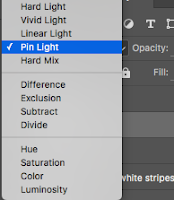Reviewing the production of the preliminary tasks, (this was the area that changed the most).I showed changes in the technology I used as this massively impacts the finished products. For the preliminary task I worked on PowerPoint, this really limited the creativity I could have shown for my school magazine products. The colours I used were really vivid and unappealing, it didn’t flow. It’s clear to see that there was no thought process to what colours I was using; it was all just put onto page. I used fonts and images that didn’t entirely correspond. I showed no skills as I didn’t edit the images. Another aspect that lacked professionalism was the environment of where I chose to take the images. The images were just taken within school grounds therefore again limiting how unique my preliminary task turned out to be. Also the cover lines have a lot of space in between each one, this made the page seem really basic and boring.
Looking back at the title for my school magazine I named it ‘’Discover
Hampz’’, I just created a word that I thought would appeal the most to the audience,
I don’t share the same opinion looking back now. It’s quite childish and
informal especially since the magazine would have been aimed at a target
audience of students that are much more mature (even parents). I also feel that
there was again not much thought put into the title, the font is just a plain
white thick font which again lacks excitement and creativity. The contents page
was extremely boring too, the photos used were basic and took up the majority
of the page, and the summaries were left with a small corner of the page. This
defocuses and takes away from the actual purpose behind a contents page. The
preliminary task overall just looks boring and silly.
Moving onto my actual magazine production I spent more time
and devoted myself to creating the perfect few pages of a magazine from a genre
that I feel I can genuinely relate too. I chose to work with the Indie Pop
genre due to listening to an artist (Banks in particular) nearly every day. She
was the only one that calmed me down and the only artist who didn’t end up
giving me a headache. I felt like I had a connection to the artist, as well as
other artists within the genre and therefore could create something that would
appeal to the target audience. I spent time researching, looking at interviews,
taking images that could be worthy of putting in a magazine and hours on
Photoshop editing, making changes , altering simple things and adding detail
every time. This allowed me to create the perfect magazine, front cover,
contents page and double page spread as oppose to the preliminary tasks that
were created very quickly, on PowerPoint and not much thought or effort was put
into it.
Using Photoshop
allowed me to create more unique designs for example the title, the different
images and brushes used to have a larger impact. I adjusted the backgrounds,
removed them, and adjusted the brightness and hue/saturations. I used the brush
tool to colour in the backgrounds in different colours to show experimentation.
I kept making vast changes to my final product such as using textured
backgrounds after being told my contents page looked ‘quite flat’. There was no
dimension to them at first, this changed and I created something completely
different. Whereas for the preliminary task the lack of feedback held me back
from making changes or seeing what needed to desperately be improved. The title
I used for my magazine ‘Sanity’ shows a thought process, a huge development and
has an actual idea or theory behind it as oppose to ‘Discover Hampz’.Again for
my final product I kept making changes to the title too, trying different
colours and fonts and choosing the final one based on feedback.
Another massive change between the preliminary task and the
final product was the language I used. I feel that for my final product I used
more formal language and words that appealed to the audience more. I
incorporated the lessons we had on editor’s letters and emotive & colloquial
language when creating the cover lines or writing the interview. I also
researched what sort of language was being used by other music magazines such
as Q, NME or even Kerrang!. The language used for my preliminary front cover
and contents pages was quite informal; I didn’t use any words or phrases that
would attract my audience deeply.
From completing this
task I have learned how important paying attention to detail is, how beneficial
the idea of ‘trial and error’ is to the magazine industry and how much time
consuming the tasks are. I also learnt how patient you have to be and that time
should be spent researching in order to really understand the genre you are
working in. This then aids you into completing the task with a product that has
the full potential of fitting into the media industry perfectly.



















